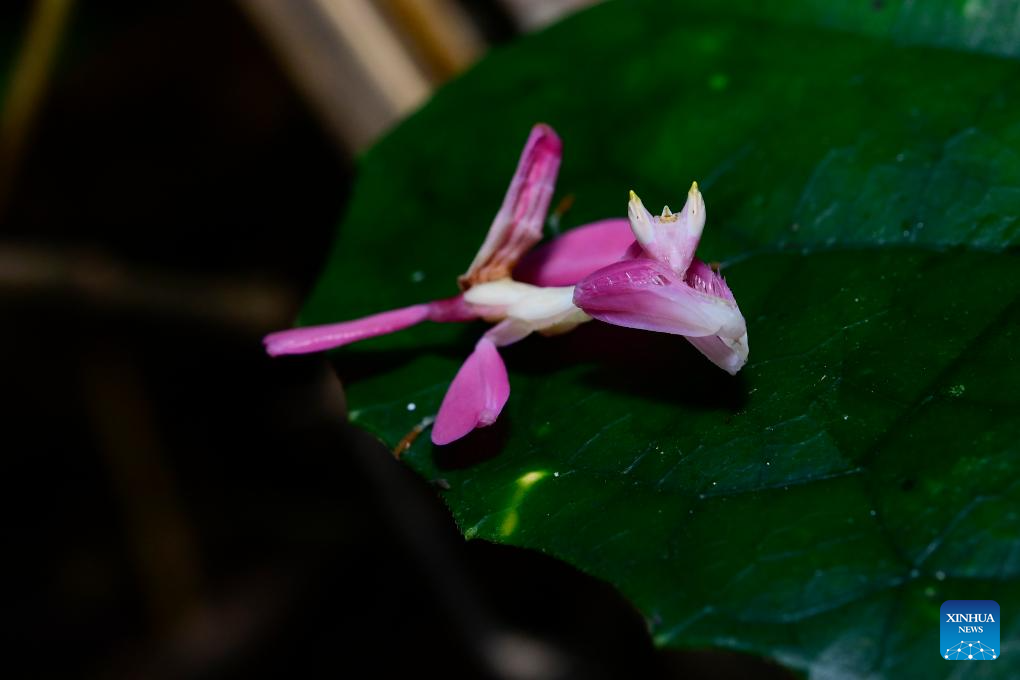
This file photo taken on Nov. 5, 2020 shows an orchid mantis at Xishuangbanna Tropical Botanical Garden of the Chinese Academy of Sciences in southwest China's Yunnan Province. Chinese scientists have found that orchid mantises, hailed as a classic example of flower mimicry, use their petal-shaped legs for gliding. (Photo by Mo Haibo/Xinhua)
KUNMING, Nov. 30 (Xinhua) -- Chinese scientists have found that orchid mantises, hailed as a classic example of flower mimicry, use their petal-shaped legs for gliding.
The study led by the Xishuangbanna Tropical Botanical Garden (XTBG) of the Chinese Academy of Sciences challenges the long-held belief that these winged legs, or femoral lobes, mimic flowers to attract their pollinating prey.
The study was published in the journal Current Biology on Wednesday.
In this study, the scientists conducted behavioral research and found that orchid mantises are excellent gliders.
"The petal-shaped femoral lobes are just like wings, serving as an important structure for gliding," said Chen Zhanqi, leader of the research team of the XTBG.
Chen added that orchid mantises that fell from a height of 10 meters could glide an average distance of 6.1 meters, with the farthest recorded glide reaching 14.7 meters.
"These lobes represent the first documented rigid exoskeleton structures enabling gliding, making orchid mantises the most adept arthropod gliders known to date," Chen said.
"With winged legs, orchid mantis sets gliding record. Camouflaged like a flower, these predators also have a getaway trick," said a review on this discovery published on the website of the journal Science. ■

This file photo taken on Dec. 16, 2022 shows an orchid mantis at Xishuangbanna Tropical Botanical Garden of the Chinese Academy of Sciences in southwest China's Yunnan Province. Chinese scientists have found that orchid mantises, hailed as a classic example of flower mimicry, use their petal-shaped legs for gliding. (Photo by Mo Haibo/Xinhua)



